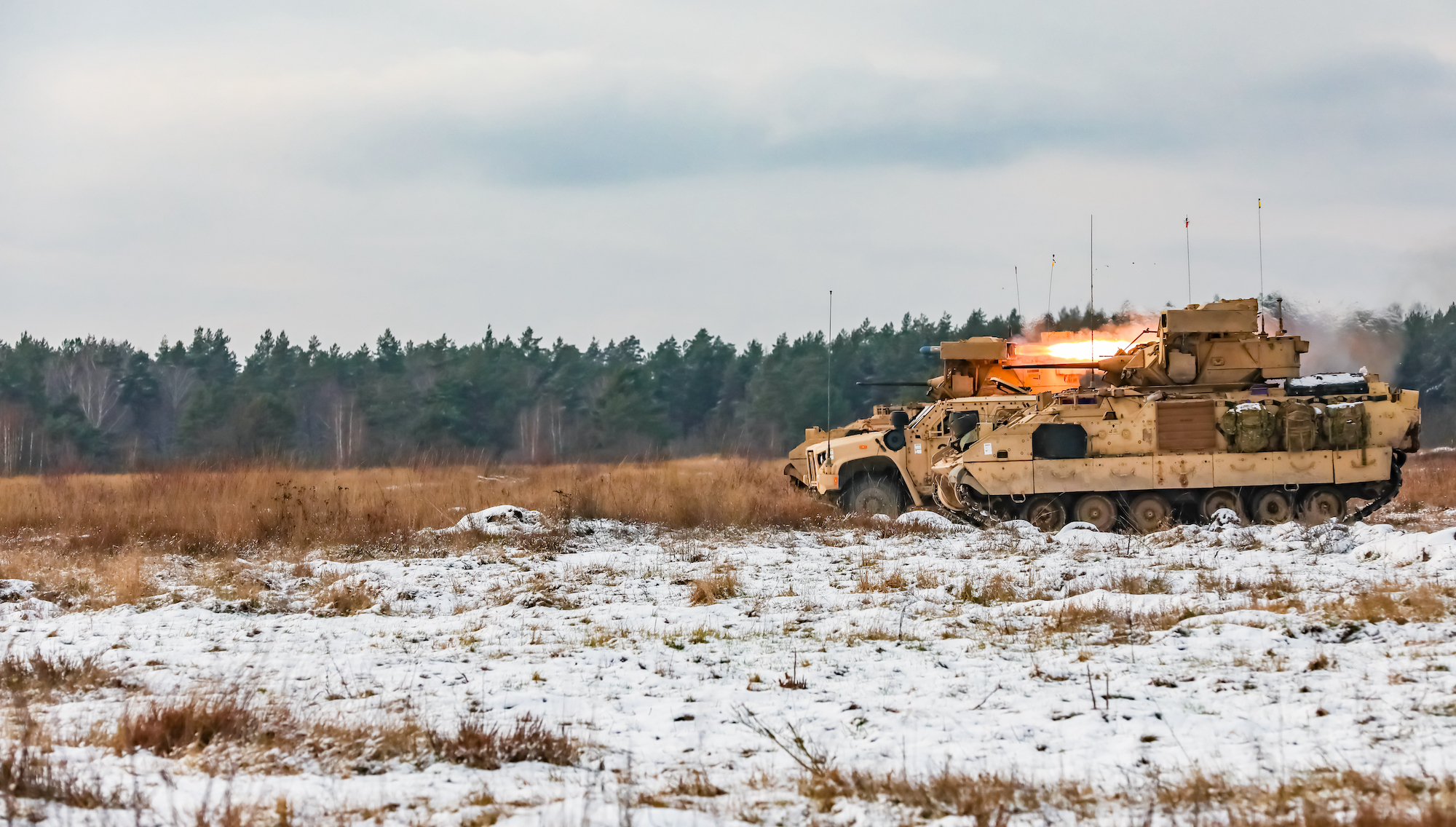

On January 6, the Department of Defense announced it was going to send 50 Bradley infantry fighting vehicles to Ukraine. The long-awaited move comes amidst a flurry of announcements from NATO nations about sending armored vehicles to Ukraine, as the country’s fight against the Russian invasion lurches inevitably towards its second year.
The Bradley is an armored transport, with tracks and a small turret. It is tank-like in appearance, though the Bradley’s gun is much smaller than what’s mounted on a main battle tank like the M1 Abrams fielded by the US military. Its inclusion in the aid package comes after public calls from Ukraine’s President Zelensky for countries to send them high-end military equipment, including tanks.
“It’s not a tank, but it’s a tank killer,” Brigadier General Pat Ryder, the Pentagon Press Secretary, said at a press conference on January 5. “A Bradley is an armored vehicle that has a firepower capability that can deliver troops into combat. So, again, it will provide a significant boost to Ukraine’s already impressive armor capabilities. And we’re confident that it will aid them on the battlefield.”
[Related: Ukraine is getting upgraded Soviet T-72B tanks]
In the January 6 announcement of US aid to Ukraine, the 50 Bradley vehicles share a line with 500 TOW anti-tank missiles, as well as 250,000 rounds of 25mm ammunition. The TOW, an acronym that originally stood for “Tube Launched, Optically Tracked, Wire-Guided” and now stands for the “Tube-launched, Optically-tracked, Wireless-guided” missile, is a kind of anti-tank missile that often is mounted on the side of Bradley turrets. This is the primary weapon to be used against tanks, and has been for decades.
The 25mm ammunition, fired by the Bradley’s 25mm Bushmaster cannon, means that a Bradley can destroy targets like light vehicles, walls, and even helicopters. The weapon can fire armor-piercing ammunition, giving it some ability to fight with the gun against heavier armor, though that is at best a secondary use. Bradleys can sometimes fire ammunition using depleted uranium penetrators, which can punch through armor and also carry long-term environmental and health risk to civilians who might encounter them after the battle, especially if the rounds have not been properly disposed of.
Beyonds its weaponry, the Bradley can carry six or seven passengers inside. Dismounted, those soldiers can fight in support of the vehicle, before loading up and driving away as needed.
War of maneuver
One way to understand the Bradley is not in relation to tanks, which outclass it in firepower, but compared to the vehicle it was designed to replace. The M113 Armored Personnel Carriers, first introduced in 1960, were designed as a “battle taxi,” or a way to get soldiers where they needed to be to fight. The M113s were initially outfitted with machine guns, but unlike the sturdy cannon and missiles of a Bradley, the M113 was not designed to fight on its own in battle. Instead, the role of the M113 was to carry troops quickly to where they needed to disembark and fight.
The M113 is still in service today, and the Pentagon announced the aid to Ukraine would include 100 M113 APCs, alongside the 50 Bradleys provided. The M113 needs a crew of two to operate, and can carry 11 soldiers and their gear in addition to that. While a modest difference from the Bradley’s passenger capacity, it can add up: The 50 M113s can carry 550 soldiers, while 50 Bradleys can at best transport 350 troops.
[Related: What the future holds for the Army’s venerable Bradley Infantry Fighting Vehicle]
In addition to the Bradleys and the M113s, the same aid package includes 55 Mine Resistant Ambush Protected vehicles, or MRAPs. These machines, used heavily by the United States in Afghanistan and Iraq, are big troop transports with V-shaped hulls, capable of deflecting the explosive blast from roadside bombs into injuries instead of immediate deaths. Landmines, common across the war, have been exacerbated by the risk of unexploded weapons fired across the battlefield. MRAPS provide a way for Ukraine to more safely move forces across those hazards.
Rounding out the mobility aid portion of the package, the Department of Defense aims to provide 138 High Mobility Multipurpose Wheeled Vehicles (HMMWVs), popularly known as Humvees. These are light transports, which move soldiers quickly and can cross terrain, like marshes or rocky fields, that may trap heavier vehicles.
[Related: The Army’s new light tank can venture where its beefier cousins can’t]
Tanks are a threat in combat in part because they require specialized equipment, like massive cannons or anti-tank missiles to destroy. But one major way to limit the impact of heavy armor is to launch fast offensives where the tanks aren’t, and then make sure anti-tank weapons are in place before a counter-offensive. Bradleys, with TOW missiles, offer added punch. The combined fleet of MRAPs, M113s, and Humvees supporting the Bradleys ensures that Ukrainian forces will have greater freedom of movement.
While the United States is not at this moment providing Ukraine with heavy armor to fight heavy armor, it is preparing the aforementioned slew of vehicles that let Ukraine pick when and where to fight battles.
